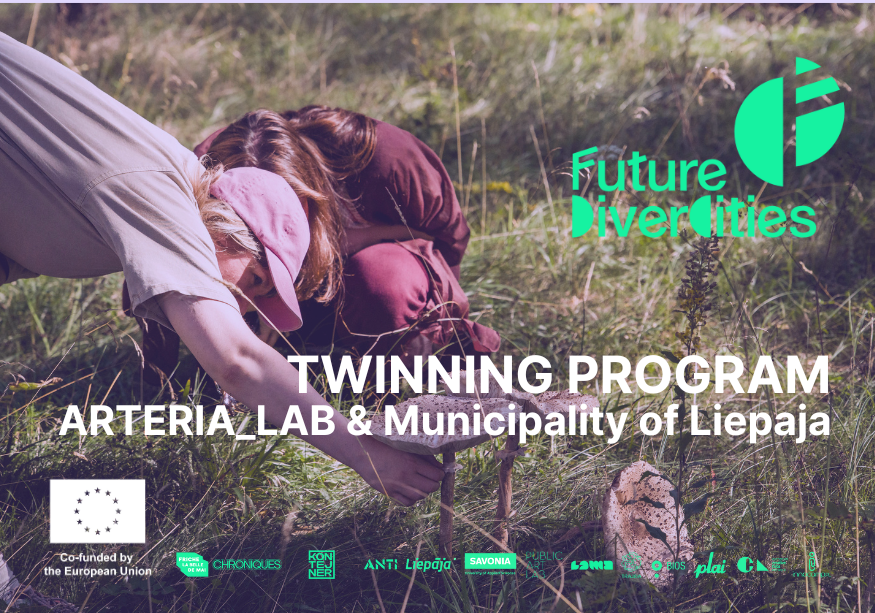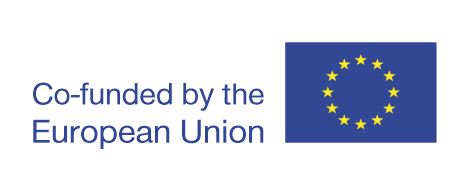An exchange on Common Challenges, Communities
Participation and European Capitals of Culture
As part of the Future DiverCities Twinning Programme, Natália Melo from _ARTERIA_LAB at the University of Évora visited the municipality of Liepaja.
A bit of context
_ARTERIA_LAB is a creative laboratory at the University of Évora in Portugal, working at the intersection of science, art, design and technology. At the core of _ARTERIA_LAB is participatory and co-creation methodologies. They work with human-environment relationships, transdisciplinarity, activism, co-creation and citizen engagement to imagine, design and build better futures. Their team includes three transdisciplinary researchers working on parallel projects related to science communication, human-climate relations, art & science practices in environmental communication, museology, community-based artistic practices, and participatory art.
As both Évora and Liepaja prepare to become European Capitals of Culture in 2027, the theme of community participation and common challenges was present throughout the recent mobility program in Latvia. From the first meetings, it was clear that the two cities share similar concerns when it comes to cultural ecosystems and community engagement. This mutual understanding fostered open conversations about difficulties, successful practices, and the ways in which challenges have been addressed in each context.
Cultural Actors in the Territory
Meetings with cultural agents in Liepaja created space to exchange information about past and current projects and to discuss visions for the future. Two recurring topics emerged: strategies for engaging communities and stakeholders in participatory processes, and preparations for the European Capital of Culture year. The latter included practical discussions on upcoming calls and opportunities for collaboration.
Liepaja 2027 Association
The encounter with the Liepaja 2027 Association focused on sharing information about activities already carried out and plans for the future. This exchange made it possible to imagine new forms of collaboration while also underlining the importance of involving communities not only as audiences but also as volunteers, actively helping to shape the success of the program.
ZIIC FabLab
Because _ARTERIA_LAB is part of the FabLab network, the program included a visit to Liepaja’s ZIIC FabLab. A video call linked the two spaces, allowing for a virtual presentation of Évora’s facilities. Together with colleagues in Liepaja, the discussion explored challenges in building maker communities, how _ARTERIA_LAB connects digital fabrication to cultural initiatives, and how ZIIC FabLab engages schools by training teachers in these skills.
Liepaja Art Research Lab (RTU) and ASTE
Another meeting took place with ASTE (Art, Science, Technology, Education), an NGO working with new media and sound art, and with members of the Art Research Lab at Riga Technical University in Liepaja. Beyond the European Capital of Culture, the discussion highlighted the role of universities in local cultural ecosystems. Parallels also emerged between projects: _ARTERIA_LAB will implement a project on energy transition and solar farms, while ASTE will create work on soundscapes linked to wind energy. These shared themes open up possibilities for future dynamics between the projects.
Poetry Days Liepaja
The visit coincided with Liepaja’s annual Poetry Days (9–20 September), this year dedicated to the 160th anniversary of Rainis, a central figure in Latvian literature and culture. Participation in two of these events, one organized by the municipality’s cultural department and another by Liepaja 2027, offered valuable insights into how literature and transdisciplinary residencies can engage communities in diverse contexts, from public parks to local bars.
Karosta
Karosta, a former military site, was another focal point of the program. Once considered dangerous by many inhabitants, it now faces both the challenges of heritage conservation and the task of reshaping public perception. Local cultural associations play a key role in community engagement and in reimagining the site’s future. The visit to the old military fort sparked conversations on past interventions, community involvement, and potential future activities. With its rich natural environment, Karosta also inspired reflections on relationships between humans and more-than-humans, and on how artistic practices, particularly new media, can activate the site with minimal physical intervention.
What Now?
The mobility program opened a dialogue with clear potential for future exchanges. On one side, there is an intention to seek opportunities within the ECoC 2027 programs to connect Évora and Liepaja through participatory projects. On the other, _ARTERIA_LAB is looking to involve additional institutions in Évora in initiatives with Liepaja. Two ideas already being discussed are the creation of joint moments between _ARTERIA_LAB and ASTE projects, and participation in an Erasmus+ application with Liepaja 2027 to develop youth clubs tied to the European Capital of Culture across different countries.
The meetings, visits, and exchanges in Liepaja confirmed that while the two cities are geographically distant, they share a common vision and similar challenges, making collaboration a natural step on the path to 2027.



